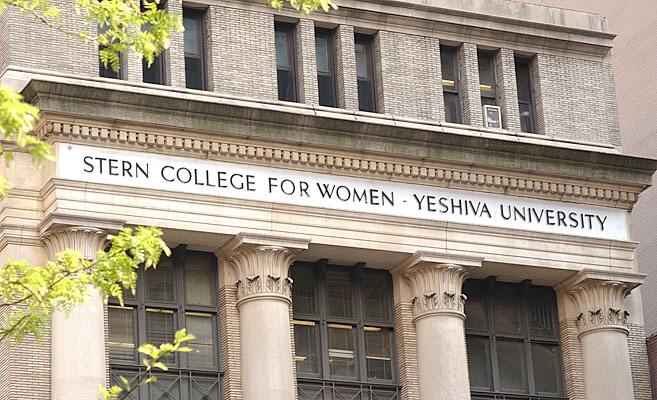
David Harbour, Clean Clothes, and How Tide Ran One of the Greatest Super Bowl Ads (Ever)
“Mr. Greene… Mr. Greene? Do you need any help?”
So begins, neither one of the great American novels of the 19th century nor a classic Best Picture winner, but an advertisement that Coca-Cola ran during Super Bowl XIV in 1980. In the ad, a young boy approaches hobbling Pittsburgh Steelers defensive tackle “Mean” Joe Greene, offering the player words of admiration and a bottle of Coke. Greene begrudgingly accepts both, but after drinking the Coke, happily throws his jersey to the boy with a “Hey kid, catch,” before the ad ends with a jingle of “Have a Coke and a smile.” The ad went on to cement itself in the annals of corporate history as one of the most famous and memorable Super Bowl ads to have ever aired, a statistic that has only become more recognized as companies expend more effort on their own Super Bowl ads. Joining the ranks of the 1980 Coke commercial are Apple’s “You’ll see why 1984 won’t be like 1984” and Wendy’s “Where’s the beef?” advertisements from Super Bowl XVII in 1984, as well as Larry Bird and Michael Jordan battling it out on the court for McDonald’s during Super Bowl XXVII in 1993. Post-2000, there are definitely some commercials that have garnered favorable memories from viewers -- Volkswagen’s 2011 young Darth Vader commercial from Super Bowl XLV and GoDaddy’s innumerable advertisements featuring scantily-clad girls come to mind -- but it was not until Tide’s advertisement this year that, I feel, another company has added its advertisement to the ranks of the Greatest of All Time.
The ad, shown during Super Bowl LII in early February, featured David Harbour -- who plays Officer Jim Hopper, from Netflix’s hit show Stranger Things -- declaring that, due to the immaculate clothes on all the actors, it could be argued that every advertisement is, in actuality, an advertisement for Tide. This continued on in various other spots during the Super Bowl, where an advertisement for what would ostensibly be another product would begin, only for Harbour to appear and declare that it is a Tide ad. At one point, the commercials ended and the announcers welcomed the viewers back to… well, another Tide ad, with Harbour appearing where NBC would normally feature a graphic of players from the competing teams.
From a humor standpoint, Tide’s advertisements were all on point. The cornerstone of humor is the subversion of expectation, and Tide accomplished that with ease, by having other product icons, such as Isaiah Mustafa -- famous for the Old Spice “Smell like a man, man” commercials (which, coincidentally, started around Super Bowl XLIV in 2010) -- Mr. Clean, and the Budweiser Clydesdale horse being upstaged or replaced by Harbour. Another ad started out with the washed-out color palette and somber music reminiscent of medicine commercials before having Harbour step in frame. Even the NBC graphics edit followed the relatively simple yet effective formula of the commercials -- set up the other product, and then come clean that the viewer is actually watching a Tide ad.
Another effective, yet more difficult, trick to pull off is the fourth wall breaking metanarrative, coming from early modern playwrights and theatrical minds such as Bertolt Brecht and Thornton Wilder. It’s not necessarily a comedic staple -- Our Town does it, and it’s not really supposed to be a comedic play -- but when it’s used well for comedy, it can make the jokes that much more memorable (see Woody Allen’s one act masterpiece God), and I would say that Tide nailed it. It’s become more common for advertisers to talk about being advertisements; Michelob Ultra tried that in their own Super Bowl ad this year, and that one was pretty funny as well. Tide’s, though, was even more meta -- not about the advertisement filming experience, but the nature of what exactly the ad is trying to sell the consumer.
In hitting both of those comedic checkboxes, Tide has already set themselves up to be a pretty memorable ad campaign, together with Amazon for getting various celebrities to voice Alexa, Doritos and Mountain Dew for their Peter Dinklage/Morgan Freeman rap-off, or M&Ms for turning the red M&M into Danny Devito. But for why those commercials are going to fade away with time while Tide’s 2018 ad campaign should be considered one of the greats, we have to look a little deeper, not just into the advertisements, but into advertising itself.
Contrary to popular belief, the goal of advertising is not necessarily to get you to jump off your couch, run to the nearest store, and clear the entire inventory of whatever product’s commercial you just watched. The people who make Ford commercials aren’t expecting the average viewer to immediately rush to their local dealership and purchase the all-new 2018 Ford Fiesta for just $10,999 with 0% down and no financing (not an actual endorsement for Ford, I’m just parroting the average car commercial). Advertising is all about brand recognition -- you don’t need a car now necessarily, but the next time you need to go to the dealership when your old car breaks down, Ford is going to hope that of all the advertisements playing in your head as you consider which replacement car to buy, theirs is going to be playing the loudest. It’s true of cars, it’s true of fast food, it’s true of every company that has a jingle or a catchphrase or something memorable to make the consumer think of them first when it comes time to make a shopping trip.
What Tide did that night, by declaring every ad with clean clothes in it a Tide ad -- and subsequently building on that by hijacking other products to become Tide ads -- was much more than being louder than the competition, it was effectively putting competing products on mute. Tide’s campaign had consumers thinking about Tide, even during commercials for products that wouldn’t even be competing with the company in laundry detergent sales. Every time an ad started, people’s first thoughts wouldn’t be about the product at hand, they would be, “Wait, is this actually going to be a Tide ad?” Tide has taken the simple bait-and-switch humor and turned it into a genius marketing tactic, using it to silence the other competition and leave only Tide in the minds of the consumers.
In this respect, I think Tide actually outshines the great commercials that I mentioned earlier. Yes, drinking a Coke and watching “Mean” Joe Greene give a kid his jersey would put a smile on anyone’s face. Yes, having a Big Mac while seeing two basketball legends compete for McDonald’s is Yes, Wendy’s was throwing shade at the competition for their beef even before this year’s commercial, although the 1984 one was more subtle and the “Where’s the beef?” tagline more iconic than simply ragging on McDonald’s. But none of them came close to Tide’s brilliance in dominating the advertising sphere by effectively turning themselves into the only advertisers.
In fact, this whole article wasn’t even an article. It’s actually a Tide ad. Well done, Tide.



